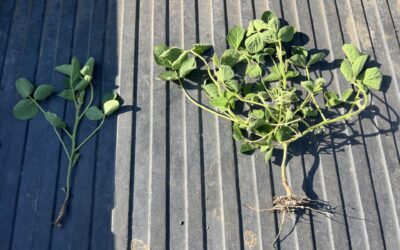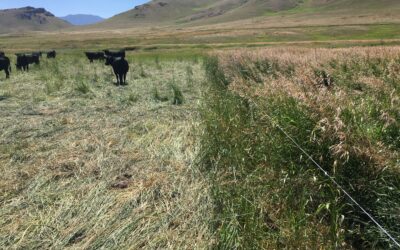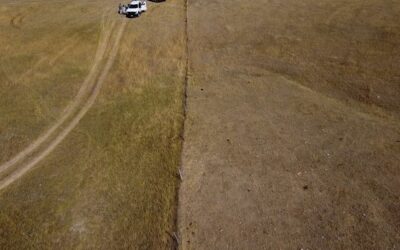Reactive Carbon
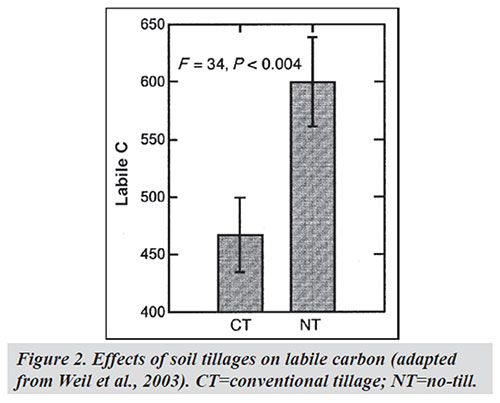 Soil organic matter (SOM) contains C compounds with different levels of degradability, from very easily decomposable to extremely resistant (recalcitrant) to decomposition. Each C component has a different residence time in the soil and performs different functions. Reactive carbon (RC), also known as permanganate oxidizable carbon (POxC), is a fraction of the SOM pool that is oxidizable in the presence of potassium permanganate in solution. Carbon oxidized by this compound includes the C most readily degradable by microorganisms as well as that bound to soil minerals, making RC interpretation somewhat difficult. Because of this association to the mineral fraction, RC is considered a chemical indicator, not a biological indicator. Nevertheless, a recent research project conducted across a range of environments and management conditions (12 studies) showed that POxC was significantly related to particulate organic carbon, soil microbial biomass carbon (BMC), and, in one study, soil organic carbon.
Soil organic matter (SOM) contains C compounds with different levels of degradability, from very easily decomposable to extremely resistant (recalcitrant) to decomposition. Each C component has a different residence time in the soil and performs different functions. Reactive carbon (RC), also known as permanganate oxidizable carbon (POxC), is a fraction of the SOM pool that is oxidizable in the presence of potassium permanganate in solution. Carbon oxidized by this compound includes the C most readily degradable by microorganisms as well as that bound to soil minerals, making RC interpretation somewhat difficult. Because of this association to the mineral fraction, RC is considered a chemical indicator, not a biological indicator. Nevertheless, a recent research project conducted across a range of environments and management conditions (12 studies) showed that POxC was significantly related to particulate organic carbon, soil microbial biomass carbon (BMC), and, in one study, soil organic carbon.
The residence time of RC is estimated to be 2 to 5 years, in contrast to recalcitrant C (e.g., humus) that has a turnover time of several hundred to thousands of years. Reactive carbon originates from the various fractions of SOM. These fractions include fresh organic material, soil microbial biomass, particulate organic matter, and other easily metabolized organic compounds, such as carbohydrates (sugars) and proteins (amino acids), as well as C loosely bound to soil minerals. Because of its relatively short turnover time, RC is more sensitive to management changes affecting soil C in agro-ecosystems than total organic carbon (TOC). Reactive carbon may be used as an indicator of change produced by cropping and soil management practices that manipulate SOM content.
Relationship to Soil Function
It is well documented that many soil functions are strongly influenced by SOM and, due to its association with TOC and microbial biomass, are likely to be related to RC as well. However, as the exact nature of the C fraction extracted by the potassium permanganate oxidation method has not been fully characterized, the functions affected must be addressed in general terms. Enhanced water aggregate stability by high levels of SOM (and, concomitantly, high levels of RC) improves water infiltration, reducing soil degradation by water and wind erosion. Reactive carbon is linked to a number of soil processes, including microbial biomass growth/activity and nutrient cycling. Researchers have found that POxC is significantly related to MBC and in few cases SOC and, thus, may be equally well suited to track management practices that promote C sequestration.
Problems with Poor Activity
Due to the relatively short turnover time of RC, significant decreases in RC may signal a decline in SOM and indicate the deterioration of physical, chemical, and biological properties and processes related to SOM. The adverse effects caused by the decline in RC include reduced aggregate stability, increased bulk density, and reduced water infiltration, water-holding capacity, microbial activity, and nutrient availability.
Improving Management
All practices that increase SOM will likely increase RC. Figure 2 shows changes in RC content under two different soil management practices. As expected, no-till (NT) resulted in a significant increase in SOM and RC when compared to conventional tillage (CT). Some practices beneficial for increasing SOM (and potentially RC) are:
- Reduced tillage (no-till);
- Adoption of crop rotations, cover crops, or other crop diversity measures;
- Addition of manure, fresh residues, and compost; or
- Combinations of the above.
This Page Was Created Utilizing Text And Images From These Sources:
Reactive Carbon, Soil Quality Indicators Fact Sheet- USDA Natural Resources Conservation Service
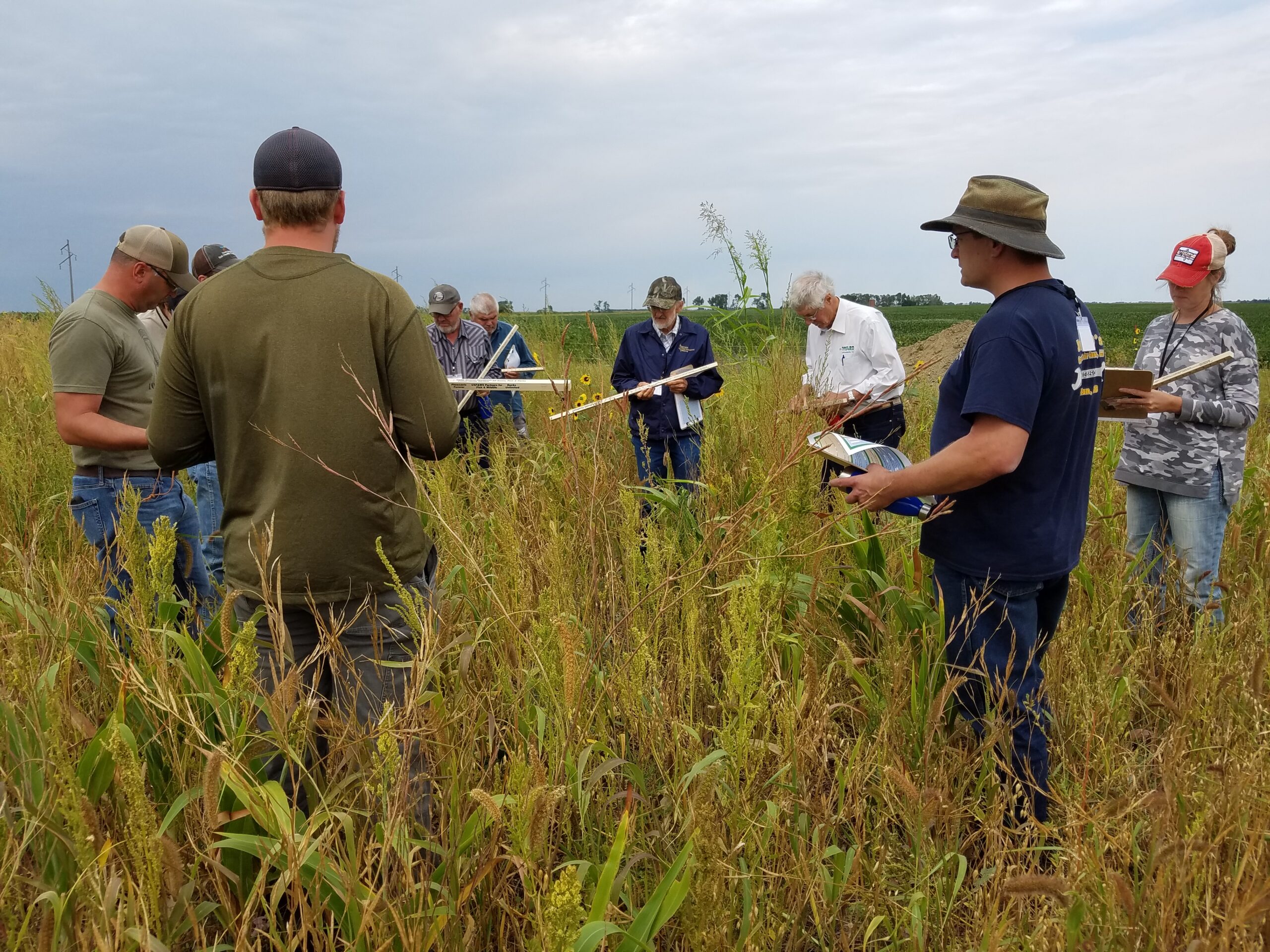
West River Soil Health School Registration Open!
In 2024, the South Dakota Soil Health Coalition will host an additional Soil Health School in west of the Missouri River! The 2024 West River Soil Health School with be held June 26-27 near Caputa, SD! This school will focus on issues specific to the land, climate, and ag production systems of wester South Dakota. Class size is limited, so early registration is strongly encouraged!
News & Events
Farmer reaps higher yields by interseeding soybeans
By Stan Wise Alex Frasier has spent a lot of time studying what it takes to grow a successful crop. After studying ag production and precision technology at Lake Area Technical College, he has worked in ag retail and currently works as an agronomist in Aberdeen, SD....
Farm and ranch innovators to share new ideas at Soil Health Conference
By Stan Wise PIERRE, SD — Before Cooper Hibbard came home to manage his family’s ranch, he studied ag business, rangeland resources and Spanish at California Polytechnic State University and then worked on ranches all over the world. That education and experience...
Wintertime is decision time
By Stan Wise PIERRE, SD – It’s often said that the best time to start improving your land was 20 years ago, but the second-best time is right now. That statement might be harder for ranchers to swallow with winter on their doorstep, nothing growing in their pastures,...
